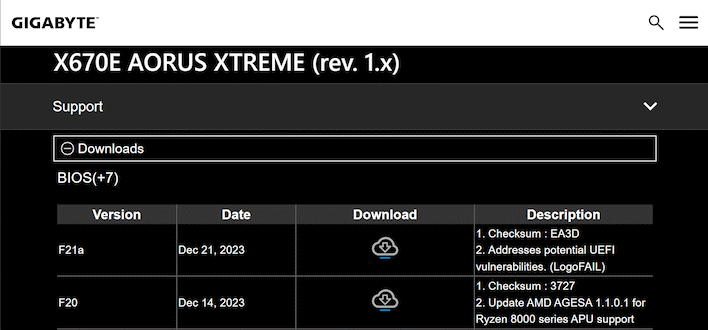Like all trendy processors, AMD’s Ryzen chips require microcode updates at boot to do their factor. These microcode updates come from AMD as a part of its AGESA firmware that comprises System Administration Unit (SMU) configurations for every sort of processor supported by that individual mainboard. Proper now, all AMD Socket AM5 processors are based mostly on the “Raphael” design, however that will not be the case earlier than lengthy.


Trying on the speculative Ryzen 8000G lineup is fascinating as a result of Phoenix helps 4 simultaneous show connections, but only a few Socket AM5 motherboards have greater than two show outputs, and lots of solely have a single HDMI or DisplayPort connection. We’re curious to see if motherboard distributors will begin to launch boards designed particularly with Phoenix-based processors in thoughts, with in depth show connections and maybe improved assist for high-speed DDR5 reminiscence overclocking.
We’re additionally curious to see how a processor just like the Ryzen 7 8700G will maintain up in opposition to the Ryzen 7 7700X in benchmarks. It solely has half the PCIe connectivity and half the L3 cache, however its monolithic design will give it an edge in reminiscence latency. When evaluating the Zen 3-based Ryzen 7 5700G in opposition to the chiplet-based Ryzen 7 5700X, efficiency can fluctuate fairly a bit relying on whether or not the applying suits within the chiplet CPU’s bigger 32MB L3 cache.
AMD is anticipated to announce the Ryzen 8000G APUs at or round CES, which is barely greater than per week away at this level, so these of us who’re eager to construct a DIY mini-PC with quick Radeon 780M built-in graphics should not have too lengthy to attend.













